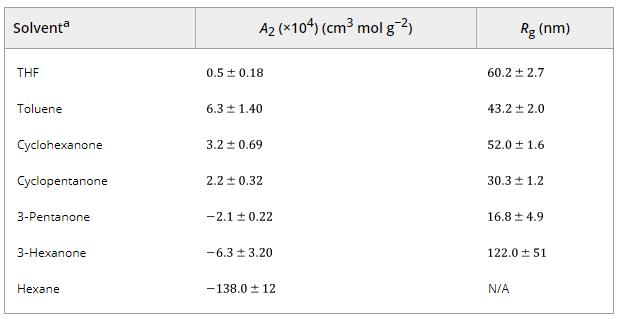Solution properties, unperturbed dimensions, and chain flexibility of poly(1-adamantyl acrylate)
Wei Lu,1 Panchao Yin,2 Masashi Osa,3 Weiyu Wang,4 Nam-Goo Kang,1 Kunlun Hong ![]() ,4 Jimmy W. Mays1
,4 Jimmy W. Mays1
1 Department of Chemistry, University of Tennessee, Knoxville, Tennessee 37996
2 Chemical and Engineering Materials Division, Neutron Sciences Directorate, Oak Ridge National Laboratory, Oak Ridge, Tennessee 37831
3 Department of Chemistry, Aichi University of Education, Kariya, 448-8542, Japan
4 Center for Nanophase Materials Sciences, Oak Ridge National Laboratory, Oak Ridge, Tennessee 37831
Correspondence to: N.-G. Kang or K. Hong
J. Polym. Sci., Part B: Polym. Phys. 2017, 55, 1526-1531
DOI: 10.1002/polb.24408
Publication Date (Web): August 11, 2017
Copyright © 2017 Wiley Periodicals, Inc.
*E-mail: nkang1@utk.edu; hongkq@ornl.gov

Poly(1-adamantyl acrylate) (PAdA) exhibits much higher glass transition and degradation temperatures than other polyacrylates. However, the quantitative evaluation of the stiffness of this polymer chain has not been reported previously. In this study, the dilute solution properties and conformational characteristics of PAdA were evaluated using viscometry and scattering techniques. The unperturbed dimensions of this polymer were evaluated using the Burchard-Stockmayer-Fixman extrapolation and the touched-bead wormlike chain model. The PAdA chain has a comparable persistence length, diameter per bead and characteristic ratio to poly(methyl methacrylate) and polystyrene. All these results indicate that PAdA is less flexible than common polyacrylates. In addition, the second virial coefficients (A2) of PAdA in different solvents obtained by static light scattering were compared. Among the solvents investigated, tetrahydrofuran is a moderate solvent. Radius of gyration of a polymer sample in the various solvents ranged from 16.8 to 30.3 nm.

